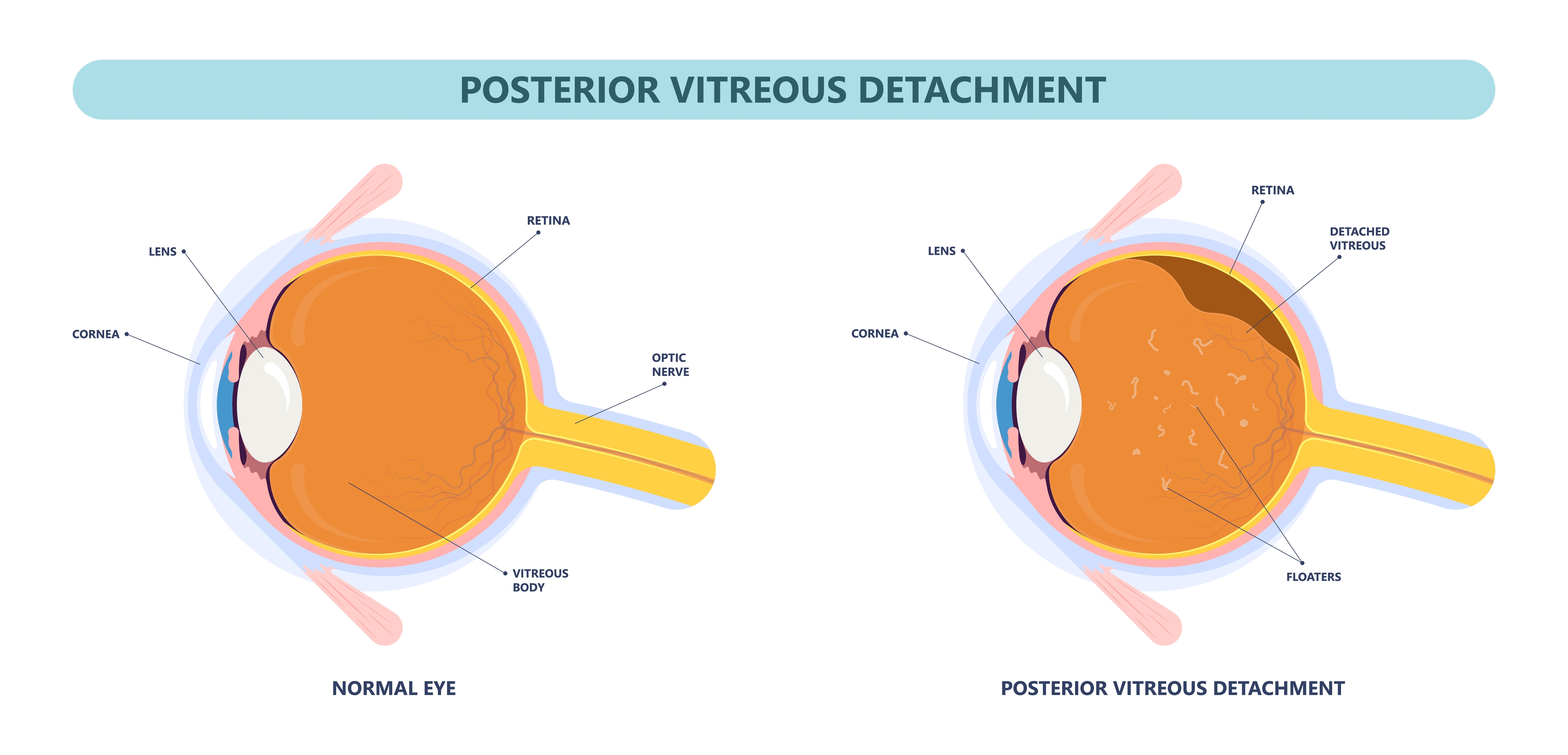Last Updated: April 5, 2024

What is vitreous detachment?
The vitreous is a gel-like material contained within a sac that is tightly attached to the retina, the light-sensitive tissue at the back of the eye. One role of the vitreous is to keep the eyeball inflated, much like air in a soccer ball. However, the vitreous sac can pull away from the retina and shrink as we age. This is called vitreous detachment.
Vitreous detachment may occur spontaneously, or after eye surgery, physical trauma to the head or eye, or due to an inflammatory process.
What are the symptoms of vitreous detachment?
Symptoms of vitreous detachment include:
- floaters in your vision,
- flashing lights, and
- Less acute vision.
There may not be any noticeable symptoms.
Can vitreous detachment lead to vision loss?
If the vitreous sac pulls away from the retina with excessive force, it can cause a hole or tear in the retina. This can lead to a serious condition called retinal detachment, which can result in significant vision loss.
Seeing your optometrist for regular comprehensive eye examinations can help detect vitreous detachment early on and prevent it from getting worse.
Video: What is a vitreous detachment? | Dr. Chelsea Syverson